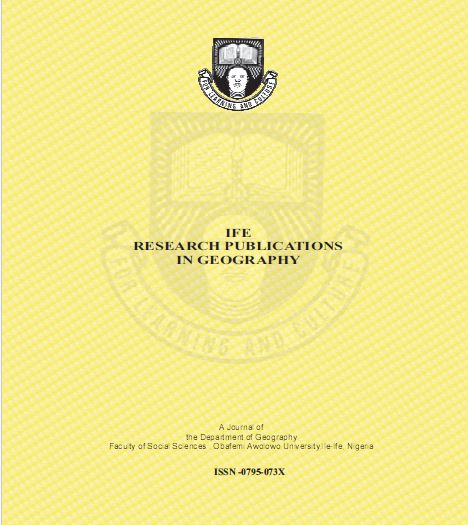Trends in the extreme daily rainfall amount and the frequency of rainy days in Sokoto, Sudano-Sahelian ecological zone of Nigeria
Keywords:
Heavy Rainfall; Light Rainfall; Rainy Day; Largest Daily; Annual Rainfall Trends; CorrelationAbstract
The study examined the trends in both the frequency and magnitude of extreme daily rainfall amount and the frequency of rainy days in Sokoto, Sudano-Sahelian ecological zone of Nigeria between 1951 and 2010. Its specific objectives include determining the trends in the frequencies of the light and heavy daily rainfall, the largest daily annual rainfall magnitude, rainy days and total annual rainfall in Sokoto over time; examining the relationship between the frequencies of the light and heavy daily rainfall, largest daily annual rainfall magnitude and rainy days and total annual rainfall in the study area; and comparing the intra-annual rainfall distribution of 2010 with that of a long time mean over Sokoto. Results indicated that between 1951 and 1984 the total annual rainfall, frequency of heavy rainfall and rainy days experienced significant declining trends but thereafter, all the parameters except the
frequency of heavy daily rainfall, experienced statistically significant upward trends. In aggregate (1951-2010) it resulted into a statistically significant declining trend for the frequencies of the heavy daily rainfall but an increase for the light rainfall and stationary time series of other rainfall parameters between 1951and 2010. There is significant positive relationship between the frequency of heavy daily rainfall, largest daily annual rainfall
magnitude and rainy days, and the total annual rainfall in Sokoto, with the heavy daily rainfall contributing most to the inter-annual variability in the total annual rainfall. The results also show that the rainfall of all the months of the rainy season are higher in 2010 than the 1951-2009 average except September which was even slightly lower. The increase in the annual total was overwhelmingly contributed to by the rainfall of the months of July and August. The total annual rainfall recorded in 2010 is unprecedented since 1951. This is a major factor of the flooding reported over the region in 2010. As global warming intensifies therefore, it is anticipated that the hydrological cycle does the same and consequently increases the frequencies as well as the magnitudes of the various rainfall parameters
investigated. The Sokoto region should therefore prepare for a wetter condition rather than a drier one.




